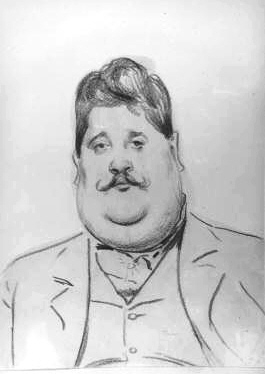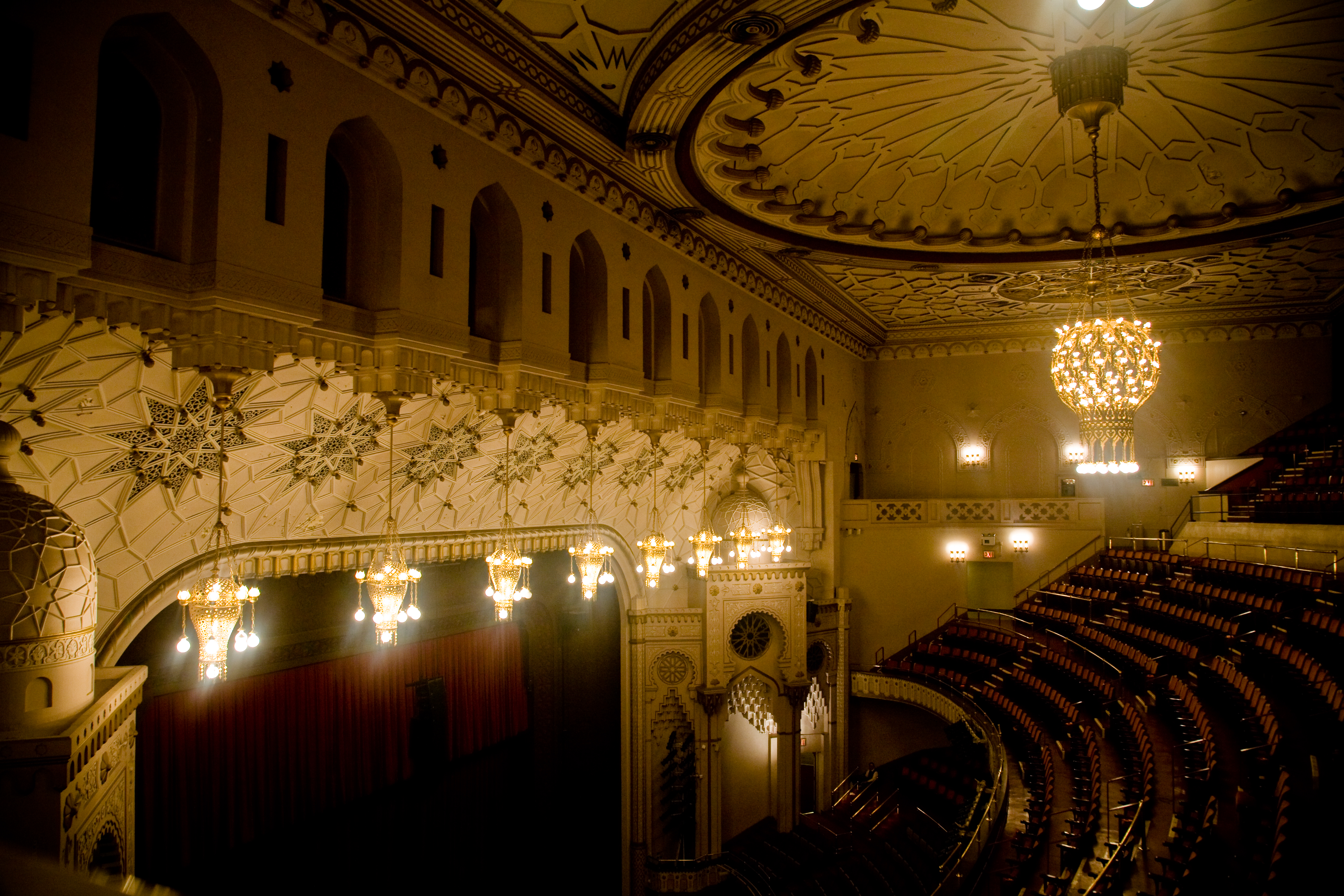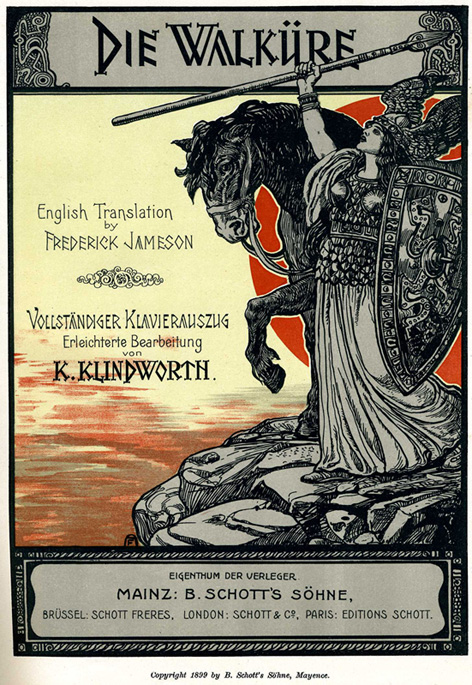|
Richard Rychtarik
Waslav Richard Rychtarik (July 20, 1894 — July 10, 1982"Richard Rychtarik, 87, Designer of Stage Sets," ''New York Times'' (July 12, 1982), page A12.) was a Czech-born American set and costume designer. His significance was in his efforts to bring modernism to operatic and theatrical stage productions primarily during the 1930s and 1940s. Despite his work for opera and theater, his best known work was as set designer for the television series ''The Honeymooners.'' Career He was born Choceň in what is now the Czech Republic. During Rychtarik's early years he became obsessed with the stage. He claimed to have attended performances at National Theatre of Prague nearly every day, staging puppet performances in his home, even constructing a set in his high school gymnasium. At a time when one could not study staging design, he studied architecture at the Czech Technical University in Prague. He viewed Max Reinhardt as a primary influence. Obtaining small jobs assisting the theatr ... [...More Info...] [...Related Items...] OR: [Wikipedia] [Google] [Baidu] |
The Honeymooners
''The Honeymooners'' is an American television sitcom which originally aired from 1955 to 1956, created by and starring Jackie Gleason, and based on a recurring comedy sketch of the same name that had been part of Gleason's variety show. It follows the lives of New York City bus driver Ralph Kramden (Gleason), his wife Alice (Audrey Meadows), Ralph's best friend Ed Norton (Art Carney) and Ed's wife Trixie (Joyce Randolph) as they get involved with various schemes in their day-to-day living. Most episodes revolve around Ralph's poor choices in absurd dilemmas which frequently show his judgmental attitude in a comedic tone. The show occasionally features more serious issues such as women's rights and social status. The sketches first aired on the DuMont network's variety series ''Cavalcade of Stars'', which Gleason hosted, and subsequently on the CBS network's ''The Jackie Gleason Show'' which was broadcast live in front of a theater audience. The popularity of the sketches led ... [...More Info...] [...Related Items...] OR: [Wikipedia] [Google] [Baidu] |
Elektra (opera)
''Elektra'', Opus number, Op. 58, is a one-act opera by Richard Strauss, to a German-language libretto by Hugo von Hofmannsthal, which he adapted from his 1903 drama ''Elektra''. The opera was the first of many collaborations between Strauss and Hofmannsthal. It was first performed at the Semperoper, Königliches Opernhaus in Dresden on 25 January 1909. It was dedicated to his friends Natalie and Willy Levin. History While based on ancient Greek mythology and Sophocles' tragedy ''Electra (Sophocles play), Electra'', the opera is highly Modernism, modernist and Expressionist music, expressionist in style. Hofmannsthal's and Strauss's adaptation of the story focuses tightly on Electra, Elektra, thoroughly developing her character by single-mindedly expressing her emotions and psychology as she meets with other characters, mostly one at a time. (The order of these conversations closely follows Sophocles' play.) The other characters are Clytemnestra, Klytaemnestra, her mother and o ... [...More Info...] [...Related Items...] OR: [Wikipedia] [Google] [Baidu] |
Lucia Di Lammermoor
''Lucia di Lammermoor'' () is a (tragic opera) in three acts by Italian composer Gaetano Donizetti. Salvadore Cammarano wrote the Italian-language libretto loosely based upon Sir Walter Scott's 1819 historical novel ''The Bride of Lammermoor''. Donizetti wrote ''Lucia di Lammermoor'' in 1835, when he was reaching the peak of his reputation as an opera composer. Gioachino Rossini had recently retired and Vincenzo Bellini had died shortly before the premiere of ''Lucia'' leaving Donizetti as "the sole reigning genius of Italian opera".Mackerras, p. 29 Not only were conditions ripe for Donizetti's success as a composer, but there was also a widespread interest in the history and culture of Scotland. The perceived romance of its violent wars and feuds, as well as its folklore and mythology, intrigued 19th century readers and audiences. Sir Walter Scott dramatized these elements in his novel ''The Bride of Lammermoor'', which inspired several musical works including ''Lucia''.Mackerra ... [...More Info...] [...Related Items...] OR: [Wikipedia] [Google] [Baidu] |
The Island God
''The Island God'' is a one-act opera by Gian Carlo Menotti with a libretto by the composer. It was first performed on February 20, 1942, at the Metropolitan Opera in New York City. Although the opera’s only performances were in English, Menotti wrote the libretto in Italian (as ''Ilo e Zeus''). Performance history ''The Island God'' received four performances at the Metropolitan Opera, appearing on double bills with ''Pagliacci'' and ''La bohème ''La bohème'' (; ) is an opera in four acts,Puccini called the divisions '' quadri'', '' tableaux'' or "images", rather than ''atti'' (acts). composed by Giacomo Puccini between 1893 and 1895 to an Italian libretto by Luigi Illica and Giusep ...''. Although the cast included Leonard Warren as Ilo and Astrid Varnay as Telea, the opera was not a success. Reviewing the opera in ''Musical America'', Oscar Thompson called it “more effective as a literary conception than something of opera.” Menotti was dissatisfied with th ... [...More Info...] [...Related Items...] OR: [Wikipedia] [Google] [Baidu] |
Joseph Urban
Joseph Urban (May 26, 1872 – July 10, 1933) was an Austrian-American architect, illustrator, and scenic designer. Life and career Joseph Urban was born on May 26, 1872, in Vienna. He received his first architectural commission at age 19 when he was selected to design the new wing of the Abdin Palace in Cairo by Tewfik Pasha. He became known around the world for his innovative use of color, his pointillist technique, and his decorative use of line. He designed buildings throughout the world from Esterhazy Castle in Hungary to the Ziegfeld Theatre in New York. Urban studied architecture at the Academy of Fine Arts Vienna under Karl von Hasenauer. In 1890, he and his brother-in-law, Heinrich Lefler, were among the founders of the Hagenbund. Urban's early work with illustrated books was inspired by Lefler and, together, they created what are considered seminal examples of children's book illustration. Urban immigrated to the United States in 1911 to become the art director o ... [...More Info...] [...Related Items...] OR: [Wikipedia] [Google] [Baidu] |
Faust (opera)
''Faust'' is an opera in five acts by Charles Gounod to a French libretto by Jules Barbier and Michel Carré from Carré's play ''Faust et Marguerite'', in turn loosely based on Johann Wolfgang von Goethe's ''Faust, Part One''. It debuted at the Théâtre Lyrique on the Boulevard du Temple in Paris on 19 March 1859, with influential sets designed by Charles-Antoine Cambon and Joseph Thierry, Jean Émile Daran, Édouard Desplechin, and Philippe Chaperon. Performance history The original version of Faust employed spoken dialogue, and it was in this form that the work was first performed. The manager of the Théâtre Lyrique, Léon Carvalho cast his wife Caroline Miolan-Carvalho as Marguerite and there were various changes during production, including the removal and contraction of several numbers. The tenor Hector Gruyer was originally cast as Faust but was found to be inadequate during rehearsals, being eventually replaced by a principal of the Opéra-Comique, Joseph-Théodore ... [...More Info...] [...Related Items...] OR: [Wikipedia] [Google] [Baidu] |
Geschwinde, Ihr Wirbelnden Winde, BWV 201
(Swift, swift, you swirling winds), BWV 201, is a secular cantata by Johann Sebastian Bach, on a libretto by Picander (pen name of Christian Friedrich Henrici). It is a dramma per musica, likely composed for a public performance in 1729, around which time its oldest extant printed libretto was published. The text, titled (''The Contest between Phoebus and Pan''), is based on the " Ears of a Donkey" story in Ovid's ''Metamorphoses'', and mocks unsophisticated music in favour of a more intelligent composition style. The music is scored for SATTBB singers, and a baroque orchestra which includes trumpets, timpani, traversos, oboes, strings and continuo. The cantata has been recorded several times from the 1950s to the 21st century. History was likely composed for Leipzig's autumn fair of 1729, or, in that year, for a weekly concert outside the periods of Leipzig's fairs. Its oldest extant separately printed libretto, which can not be dated exactly, was published around ... [...More Info...] [...Related Items...] OR: [Wikipedia] [Google] [Baidu] |
Die Zauberflote
''The Magic Flute'' (German: , ), K. 620, is an opera in two acts by Wolfgang Amadeus Mozart to a German libretto by Emanuel Schikaneder. The work is in the form of a '' Singspiel'', a popular form during the time it was written that included both singing and spoken dialogue. The work premiered on 30 September 1791 at Schikaneder's theatre, the Freihaus-Theater auf der Wieden in Vienna, just two months before the composer's premature death. Still a staple of the opera repertory, its popularity was reflected by two immediate sequels, Peter Winter's ''Das Labyrinth oder Der Kampf mit den Elementen. Der Zauberflöte zweyter Theil'' (1798) and a fragmentary libretto by Johann Wolfgang von Goethe titled ''The Magic Flute Part Two''. The allegorical plot was influenced by Schikaneder and Mozart's interest in Freemasonry and concerns the initiation of Prince Tamino. Enlisted by the Queen of the Night to rescue her daughter Pamina from the high priest Sarastro, Tamino comes to ... [...More Info...] [...Related Items...] OR: [Wikipedia] [Google] [Baidu] |
Alceste (Gluck)
''Alceste'', Wq. 37 (the later French version is Wq. 44), is an opera by Christoph Willibald Gluck from 1767. The libretto (in Italian) was written by Ranieri de' Calzabigi and based on the play ''Alcestis'' by Euripides. The premiere took place on 26 December 1767 at the Burgtheater in Vienna. The famous preface When Gluck published the score of ''Alceste'' in Vienna in 1769, he added a famous preface in Italian almost certainly written by Calzabigi, which set out their ideals for operatic reform, whose programmatic points follow those exposed by Francesco Algarotti in his ''Saggio sopra l'opera in musica'' (''Essay on opera in music'', 1755), namely: * no da capo arias, * no opportunity for vocal improvisation or virtuosic displays of vocal agility or power, * no long melismas, * a more predominantly syllabic setting of the text to make the words more intelligible, * far less repetition of text within an aria, * a blurring of the distinction between recitative and aria, decla ... [...More Info...] [...Related Items...] OR: [Wikipedia] [Google] [Baidu] |
Metropolitan Opera
The Metropolitan Opera (commonly known as the Met) is an American opera company based in New York City, resident at the Metropolitan Opera House at Lincoln Center, currently situated on the Upper West Side of Manhattan. The company is operated by the non-profit Metropolitan Opera Association, with Peter Gelb as general manager. As of 2018, the company's current music director is Yannick Nézet-Séguin. The Met was founded in 1883 as an alternative to the previously established Academy of Music opera house, and debuted the same year in a new building on 39th and Broadway (now known as the "Old Met"). It moved to the new Lincoln Center location in 1966. The Metropolitan Opera is the largest classical music organization in North America. Until 2019, it presented about 27 different operas each year from late September through May. The operas are presented in a rotating repertory schedule, with up to seven performances of four different works staged each week. Performances are ... [...More Info...] [...Related Items...] OR: [Wikipedia] [Google] [Baidu] |
New York City Center
New York City Center (previously known as the Mecca Temple, City Center of Music and Drama,. The name "City Center for Music and Drama Inc." is the organizational parent of the New York City Ballet and, until 2011, the New York City Opera. and the New York City Center 55th Street Theater) is a 2,257-seat Moorish Revival theater at 131 West 55th Street between Sixth and Seventh Avenues in Midtown Manhattan, New York City, one block south of Carnegie Hall. City Center is a performing home for several major dance companies as well as the Encores! musical theater series and the Fall for Dance Festival. The center is currently headed by Arlene Shuler, a former ballet dancer who has been president since 2003. The facility houses the 2,257 seat main stage, two smaller theaters, four studios and a 12-story office tower.New York Times, March 17, 2010, pg C1, "City Center Is to Start Renovations", by Robin Pogrebin Architecture The building's design is Neo-Moorish and features elaborate ... [...More Info...] [...Related Items...] OR: [Wikipedia] [Google] [Baidu] |
Die Walküre
(; ''The Valkyrie''), WWV 86B, is the second of the four music dramas that constitute Richard Wagner's ''Der Ring des Nibelungen'' (English: ''The Ring of the Nibelung''). It was performed, as a single opera, at the National Theatre Munich on 26 June 1870, and received its first performance as part of the ''Ring'' cycle at the Bayreuth Festspielhaus on 14 August 1876. As the ''Ring'' cycle was conceived by Wagner in reverse order of performance, ''Die Walküre'' was the third of the four texts to be written, although Wagner composed the music in performance sequence. The text was completed by July 1852, and the music by March 1856. Wagner largely followed the principles related to the form of musical drama, which he had set out in his 1851 essay ''Opera and Drama'' under which the music would interpret the text emotionally, reflecting the feelings and moods behind the work, using a system of recurring leitmotifs to represent people, ideas, and situations rather than the conv ... [...More Info...] [...Related Items...] OR: [Wikipedia] [Google] [Baidu] |
.jpg)




.jpg)


